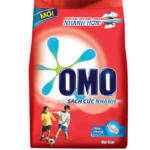Hand-washing clothes is not as simple as just mixing detergent with water and soaking them. To properly protect the color, fabric, and longevity of your garments, follow these steps:
1 Inspect and Sort Clothes Before Washing
 Check the care label
Check the care label
Each garment has specific care instructions provided by the manufacturer on the care label. Pay attention to the recommended washing method, water temperature, suitable detergents, and drying instructions.
Sort your laundry into two main groups: whites and colors. This prevents color bleeding and discoloration. Within each group, further separate the items based on their level of dirtiness and any special stains that require pre-soaking and scrubbing.
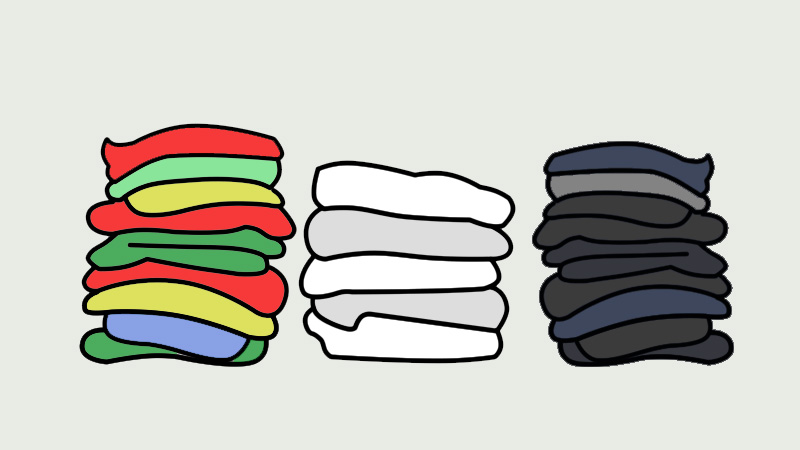 Sort your laundry by color and fabric type.
Sort your laundry by color and fabric type.
Note: Some clothes require gentle scrubbing with a brush, like dress shirts and thick trousers. For delicate fabrics like velvet, soft knits, and leather, only use your hands for washing.
2 Choose the Right Water Temperature
Selecting the right water temperature is crucial for effective cleaning and fabric care. Here are some guidelines for common fabric types:
-
Clothes prone to color bleeding or shrinkage: Use water around 30°C (86°F)
-
Linen, cotton, synthetic wool, and synthetic fiber: Wash with water at approximately 40°C (104°F)
-
Fleece, synthetic cotton: Opt for a temperature of about 50°C (122°F)
-
Bed linens, children’s clothing, and towels: Use hotter water at 60°C (140°F) to ensure thorough sanitization.
Start with the lowest suitable temperature for the first batch of laundry and gradually increase the water temperature for subsequent loads if needed.
If the care label doesn’t specify a temperature, use cool or lukewarm water to avoid potential damage or shrinkage.
3 Mix Detergent and Soak Clothes (If Necessary)
For hand-washing, dilute the detergent according to the package instructions, considering the amount of laundry you have.
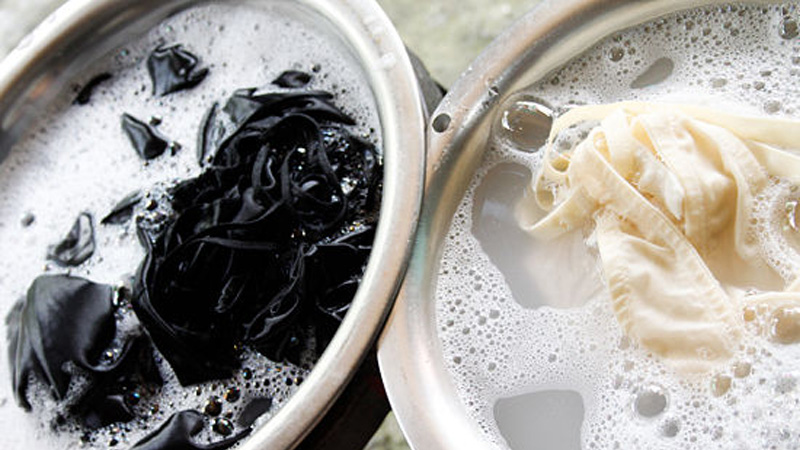 Dilute the detergent when hand-washing.
Dilute the detergent when hand-washing.
For lightly soiled items, you can skip the soaking step and directly wash them. However, for heavily soiled garments, soak them for about 30 minutes to loosen and remove stubborn dirt.
4 Wash and Rinse the Clothes
When washing, scrub both sides of the garment gently but thoroughly. Pay extra attention to collars and cuffs of shirts and the seat and inner thighs of trousers, as these areas tend to accumulate dirt and stains.
After washing, rinse the clothes with clean water two to three times to ensure all detergent residue is removed. Ideally, use water at a similar temperature to that used for washing.
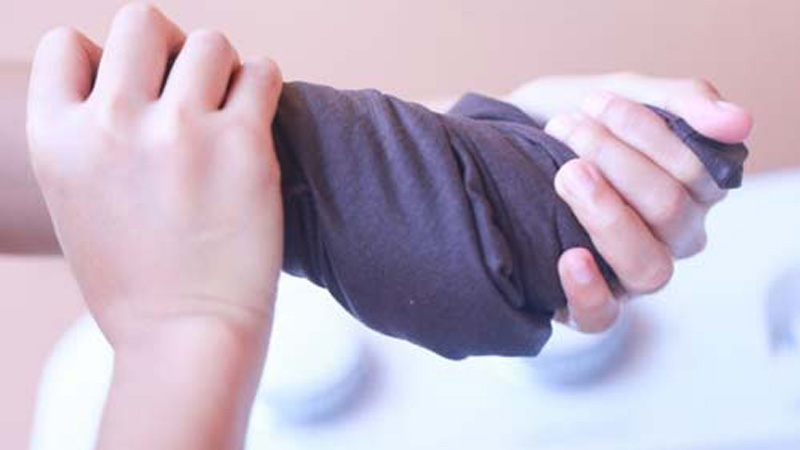 Rinse the clothes thoroughly.
Rinse the clothes thoroughly.
Once the clothes are free of detergent, prepare a final rinse with an appropriate amount of fabric softener to leave your laundry feeling soft and smelling fresh. Soak the clothes in this solution for about 15 minutes.
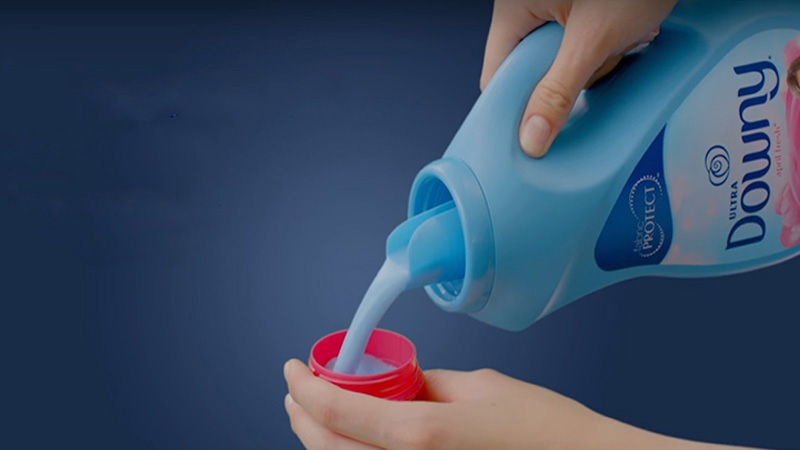 Use fabric softener for the final rinse.
Use fabric softener for the final rinse.
If you’re using a single-rinse fabric softener, you can skip the initial rinsing step.
5 Drying the Clothes
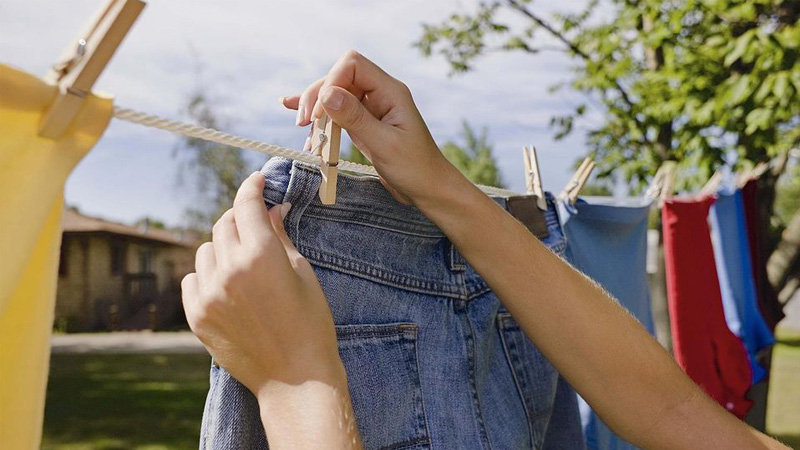 Air-dry the clothes.
Air-dry the clothes.
Hand-washed clothes tend to retain more moisture than machine-washed ones, so ensure they are dried in a well-ventilated area with ample sunlight and airflow. This prevents musty odors and mildew.
Space out the garments on the drying line to allow for better air circulation and faster drying. For delicate items and children’s clothing, use clothespins instead of large hangers to avoid stretching the fabric.
While it may seem straightforward, hand-washing clothes properly requires attention to detail. Following these steps will not only make your laundry task easier but also extend the lifespan of your garments, keeping them looking newer and feeling softer for longer.
9 Foolproof Ways to Wash Your Activewear Without Fear of Fading or Losing Shape
Introducing the ultimate guide to sportswear laundry care: bid farewell to fading colors and misshapen garments. Elevate your laundry game and keep your sportswear looking brand-new with our expert tips and tricks. Learn the secrets to maintaining the quality and vibrancy of your activewear, ensuring they last longer and continue to support your fitness journey.
Should You Air-Dry or Blow-Dry Your Pet’s Fur After Bathing?
Introducing the ultimate guide to pet grooming: “The Importance of Drying Your Pet’s Fur”.
“The art of pet grooming goes beyond a simple bath. Drying your furry friend’s coat is an essential step in the grooming process, and it’s time we shed some light on this often-overlooked topic. From the benefits of a cozy blow-dry to the potential pitfalls of air-drying, we’ll explore the ins and outs of fur care, ensuring your pet looks and feels their best. So, grab your towel and get ready to unlock the secrets to a healthy, happy, and well-groomed pet.”
The Ultimate Guide to Laundry: Freshly-Washed Clothes in a Rainy Season
When the weather is humid, it’s important to take extra care of your clothes as they are susceptible to mold and mildew. This can not only affect the appearance of your garments but also the integrity of the fabric itself. With a few simple precautions, you can keep your wardrobe looking fresh and feeling fantastic, even in the dampest of conditions.

























